If you have heard of China speed, taking this 13 days China high speed train tour will be a great chance to see it with your own eyes. As you will take high speed trains for all the inter-city transfers. This tour will start from the capital of China, Beijing, where you will have a thorough understanding of Chinese history in the Ming and Qing Dynasties. Then you will take the high speed train Beijing to Xi’an, where you will learn all about the history in the Qin Dynasty by visiting the Terra Cotta Warriors and Horses Museum. Then you will go to Luoyang where you will visit the birth place of Chinese Kung Fu, Shaolin Temple. Next, we will take you to Huangshan, and you will see the magnificent Huangshan Mountain there. Finally, you will take the high speed train from Huangshan to Shanghai where you will witness how much China has developed during the recent years. If you have any questions regarding the tour, feel free to contact our experienced staff!

Today is your first day in China. When you arrive at the airport, our guide will be waiting for you at a conspicuous place with your name sign on his/her hands. Then you will be transferred to your hotel. When we drive to the hotel, feel free to ask our guide if you have any questions. Then you can have a good rest at the hotel.
Welcome to Beijing, the capital of the People’s Republic of China! As China’s political center, cultural center, technological innovation center, and international exchange center, Beijing is a municipality, a national central city, and a megacity. It is a world-renowned ancient capital with a history of more than 3,000 years. Beijing boasts the most world heritage sites in the world. Beijing is full of both modern and historical attractions. There are more than 200 tourist attractions in Beijing, such as the Forbidden City-the world’s largest palace, the Temple of Heaven, the Summer Palace, and the Great Wall. Your wonderful China 13-day tour will start in this magnificent city.
Free Time Suggestion:
Qianmen Street is a famous traditional commercial street in Beijing, adjacent to Tian’anmen Square. There are many Chinese time-honored shops, forming a prosperous scene in the central axis of the capital. The street is 845 meters long and 20 meters wide. Dashilar area, the center of Qianmen street, has a history of nearly 500 years. It emerged in the Yuan Dynasty (1260-1368). It has been flourishing since the Qing Dynasty (1636-1912). You can buy some souvinirs here for your family and friends.
After breakfast, you will go to the first destination — Tian’anmen Square. You might have seen Tian’anmen Square on TV or the internet, but you will probably still feel shocked, for it will be much larger than what you have imagined. Tian’anmen Square is located in the heart of Beijing and is renowned for China’s political center and the world’s largest city center square. It stretches 880 meters long from north to south and 500 meters wide from east to west. With an area of 440,000 square meters, the square can accommodate one million people for grand gatherings. Built in 1417 in the Ming Dynasty (1368-1644), Tian’anmen Square has been a sacred place for holding major celebrations, grand gatherings, and welcoming foreign guests.
Then you will go to the Forbidden City (Closed on Mondays). It is also known as the Palace Museum. You can enter the Forbidden City from Tian’anmen Square. As the royal palace of our country in the Ming and Qing Dynasties, the Forbidden City is not only a symbol of power but also a representative of history. It covers an area of about 720,000 square meters, with a history of more than 600 years. It has more than 70 palaces and more than 9,000 rooms. It is located at the center of the central axis of Beijing. The Forbidden City was listed as a World Cultural Heritage in 1987, known as one of the largest and best-preserved ancient wooden structures in the world. As a place bearing the long history of Chinese civilization, everyone who comes to Beijing would like to experience the architectural and cultural charm of the Forbidden City personally. In recent years, documentaries depicting the Forbidden City have emerged one after another, continuing to draw public attention to the magnificent architectural complex. Whenever you go there, it will make an unforgettable impression on you as you can explore numerous things in this place.
After lunch, you will reach the Summer Palace. It is the best-preserved imperial garden. This classical garden, built for emperors and their families to spend hot summer days, has become one of China’s most famous tourist attractions, receiving millions of visitors every year. The Summer Palace is located in the western suburbs of Beijing, about 15 kilometers away from the city center. With an area of three square kilometers, about three-quarters of the whole park is covered by water-Kunming Lake. Next to Kunming Lake is the famous Longevity Hill. Standing here, you can see all the magnificent scenery of the Summer Palace. It also has the famous Long Corridor. It is more than 700 meters long and divided into 273 sections. There are many colorful pictures on the square beam of the corridor, showing all kinds of people, flowers, and scenery. No wonder it is called “the world’s No.1 gallery”. Then we will take you back to the hotel and have a rest.
Option:
It is recommended that you’d better not miss Beijing Roast Duck, which is a world-famous dish in Beijing. It is said that Beijing Roast Duck is originated in the Northern and Southern Dynasties (420-589) of China as court food at that time, and it has a history of more than a thousand years. The main ingredient of Beijing Roast Duck is high-quality meat duck—Beijing duck, which is roasted by fruitwood charcoal. There are three ways to eat Beijing Roast Duck. The first way is to dip the crisp duck pieces in sugar to eat. The second way is to have the duck pieces with scallion and sweet bean sauce. The third way is to eat it with sweet bean sauce and garlic paste.
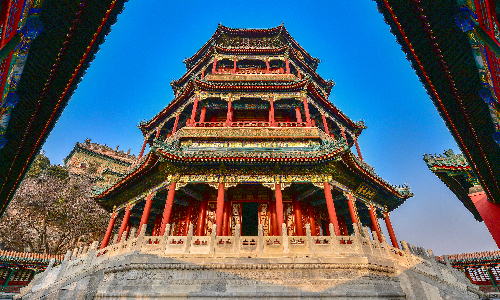
This morning, after breakfast, we will take you to the Ming Tombs. We will drive northwest for about 1.5 hours (about 50 kilometers) to get there. They are located at the southern foot of the Tianshou Mountain in Changping District, Beijing, in a small basin surrounded by mountains on its east, west, and north sides, covering an area of 40 square kilometers. It is the largest imperial mausoleum complex in China and even in the world. It has the characteristics of grand scale, complete system, and relatively complete preservation. The natural landscape of the area is beautiful, and the cultural relics as well as historic sites are gathered together.
We will take you to one of the most famous tombs among them, the Ding Tomb. Ding Tomb is the tomb of Zhu Yijun, the 13th emperor of the Ming Dynasty. There are also two of his empresses buried here. Covering an area of 182,000 square meters, it is the only tomb that its underground palace is excavated and open to visitors.
Then our guide and driver will take you northeast to the Mutianyu Great Wall, which takes about an hour’s drive (about 40 kilometers). The Great Wall is a type of military fortification in ancient China, distributed on the vast land in northern and central China, with a total length of about 21,200 kilometers. The Great Wall is a world cultural heritage, known as “one of the seven wonders in the middle ages of the world”. It is the construction that has taken the longest time in China and the world. The Mutianyu Great Wall has been under continuous construction for more than 2,000 years since the Western Zhou Dynasty (1066 BC-771 BC). Mutianyu Great Wall is the second Great Wall scenic area developed and opened in Beijing, after Badaling Great Wall. It connects Juyong Pass in the west and Gubeikou Great Wall in the east. About why choosing it as your tourist destination, Mutianyu Great Wall has a few advantages. First, it is relatively close to the city center of Beijing, with convenient transportation. Second, it is magnificent and well-preserved. Third, the vegetation is intact and the forest coverage is high, so you will see different views when you come in different seasons. Last but not least, it is the one with the most types of transportations to ascend and descend the wall.
Then we will come back to the city from Mutianyu Great Wall and it will take about one hour and forty minutes (about 73 kilometers). When we pass the Water Cube and the Bird’s Nest on the way back to the city, we will stop for a while so that you can take photos. These two places became famous during the 2008 Beijing Olympic Games, as both of them served as essential venues for competitions then.
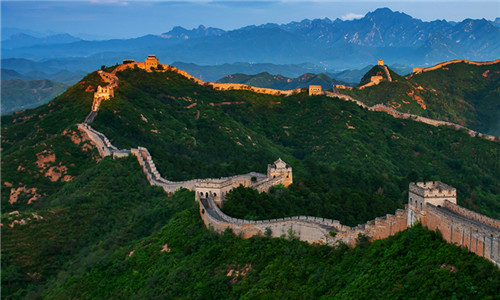
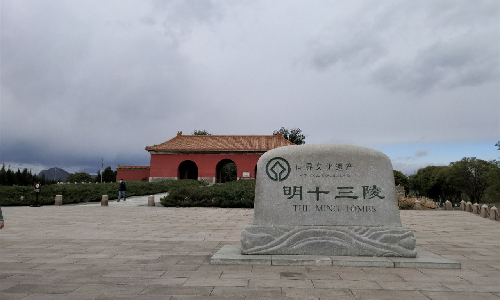
 Xi’an
Xi’an This morning we will go to see the Temple of Heaven. Of the nine altars and eight temples in Beijing, the Temple of Heaven ranks first. It served as a holy place for the Ming and Qing emperors to offer sacrifice to the heaven and pray for harvest, thus being one of the important carriers of Chinese sacrifice culture. Inside the Temple of Heaven, there is the Circular Mound Altar on the south side; the Hall of Prayer for Good Harvests on the north side. The Circular Mound Altar was the place where the emperor held a ceremony to worship heaven on Winter Solstice. The Hall of Prayer for Good Harvests was where the Ming and Qing emperors prayed for a good harvest in the first month of the spring.
It must be mentioned that the natural environment of the Temple of Heaven is unique in the center of Beijing. There are more than 3,000 ancient trees in it, which is the largest group of ancient trees in the urban area of Beijing. And there is the largest apricot forest in downtown Beijing nearby its north gate.
After the last stop in Beijing, you will go to Xi’an in Shaanxi Province. You will take the estimated train: G87 14:00/18:19 to Xi’an. Still, your guide will wait for you at the railway station and hold your name sign, at a conspicuous place. Then you will be transferred to your hotel to have a good rest.
Xi’an is a famous cultural and tourist city in China with a profound history and culture. In history, several prosperous dynasties, including Zhou, Western Han, Sui, and Tang, established their capitals here. Xi’an has six world cultural heritage sites, and the City Wall still retains the looks in the Ming Dynasty.
Free Time Suggestion:
You can choose to go to Grand Tang Mall. It is integrated with Tang culture, Tang elements, and is filled with places of shopping, catering, entertainment, and leisure activities. It is 2,100 meters long from north to south and 500 meters wide. The pedestrian street here boasts performing arts projects and fashion games with rich cultural connotations. You can have a lot of fun here.
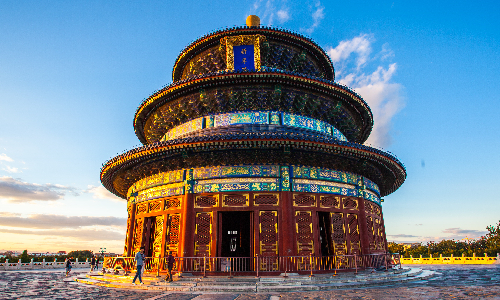
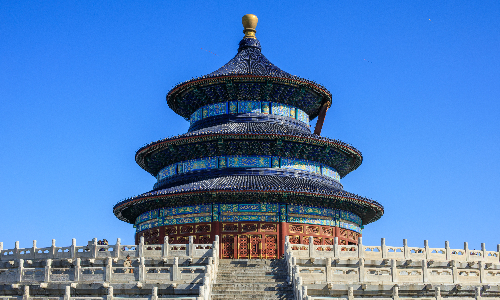
This morning, you will visit the Terra Cotta Warriors and Horses Museum after breakfast. It is located in Lintong District in the northeast of Xi’an. It takes about 40 minutes (about 43 kilometers) to drive there. Known as the “Eighth Wonder of the World”, the terra cotta warriors and horses are the symbol and business card of ancient China’s glorious civilization. On October 1, 1979, the Terra Cotta Warriors and Horses Museum was officially opened on the site of the terra cotta warriors and horses pits, which has attracted an endless stream of visitors from home and abroad.
The costumes and equipment of the terra cotta warriors are strictly customized according to their ranks and arms. According to the different costumes, manners, and hairstyles of the terra cotta figures, they can be divided into general terra cotta figures, warrior terra cotta figures, and chariot terra cotta figures. Most of them are warrior terra cotta figures. The warriors are of various types, with distinct ranks and orderly formations, reflecting the strict organization and strong force of the Qin army. All the terra cotta figures and horses are similar in size to real people and horses, with vivid facial expressions and exquisite details. In particular, the sculpting of the heads of the terra cotta figures is lifelike. Through the careful treatment of muscle texture and eyebrows, eyes, mouth as well as nose, the rich expressions and personalities of the terra cotta figures are displayed. Surely, you will be amazed by these marvelous arts.
After lunch, you will visit the Small Wild Goose Pagoda (Closed on Tuesdays) to the southwest of the Terra Cotta Warriors and Horses Museum, and we will drive about one hour (about 50 kilometers) to get there. It is located in the Jianfu Temple. Different from the Big Wild Goose Pagoda with the Indian style, the Small Wild Goose Pagoda is a traditional Chinese brick pagoda with dense eaves. Its body is square in cross-section and its front looks like a bamboo shoot after a spring rain. Because it has lost the top two stories, it has only 13 stories now and is 43.4 meters high. In the approximate 1,300 years since its completion, the Small Wild Goose Pagoda has experienced six large earthquakes. In 1487, the Small Wild Goose Pagoda was torn from the top to the bottom by an earthquake, but amazingly it recovered due to another earthquake in 1521. In 1555, the Small Wild Goose Pagoda was torn by another earthquake; again eight years later it recovered. After the founding of the People’s Republic of China, cultural relics experts found that when the Tang Dynasty artisans constructed the Pagoda, they made rammed earth into a semicircle sphere. That means in the earthquakes, the pressure was distributed evenly, and the Small Wild Goose Pagoda was like a roly-poly that never falls.
Xi’an Great Mosque is where you will go next, which is indeed a mosque with excellent architectural style. The mosque’s design adopts symmetrical composition, which belongs to the architectural style of the Ming and Qing Dynasties. It follows the style of China’s ancient buildings, with no Arabic domes, towers. Interestingly, the mosque’s wood carvings, brick carvings and stone carvings follow the Islamic art styles and are inscribed with Arabic characters and patterns. It is a perfect combination of Chinese garden architecture and Islamic art style, which makes it worth visiting.
Free Time Suggestion:
It is recommended that you explore the Muslim Quarter in Xi’an, which is a famous food and culture block. If you love dim sum and sweet taste, you can’t miss the rice and jujube cake. From a distance far away from the stall, you can smell the fragrance of jujube. Beneath the gorgeous appearance, they are soft and sweet. You can’t miss it!
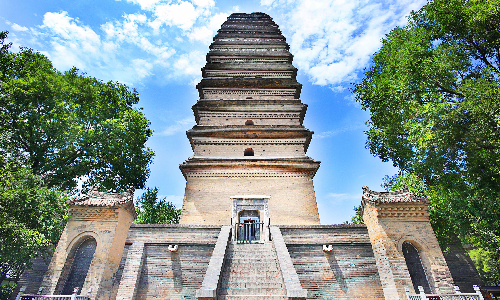
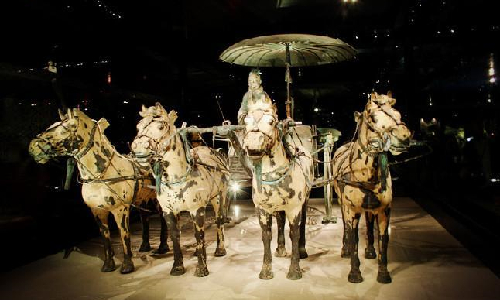
 Luoyang
Luoyang After breakfast at the hotel this morning, you will go to Luoyang. You will take the estimated train: G2260 10:08/11:26. Our guide will wait for you and pick you up at the railway station. And then, lunch will be served.
The first place in Luoyang you will visit is the Longmen Grottoes. It is a world heritage site and a treasure house of ancient Buddhist cave art. The grottoes here were mostly carved between the 5th and 10th centuries. UNESCO states that the site is “an outstanding manifestation of the artistic creativity of human”. There are 2,345 caves in Longmen Grottoes, and every one of them is wonderful. There’s one place you can’t miss, the massive and exquisite sculpture of Vairocana Buddha, the largest creation of the whole attraction. Apart from its size and beauty, what’s so fascinating is that the sculpture takes after the looks of Wu Zetian, the only female emperor in Chinese history.
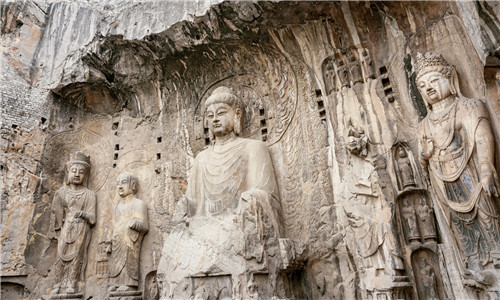
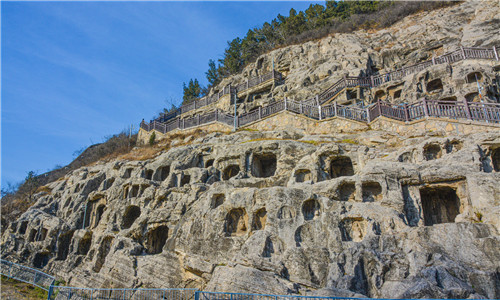
After breakfast, we will go to visit the fabulous White Horse Temple. Founded in 68 AD, the White Horse Temple is the first temple officially established by the government after Buddhism was introduced to China, and it is the key temple of Chinese Buddhism in the country. Not only is its construction full of magical and mysterious dreamlike colors, but also the scriptures inside took some hard work to get from the west.
After lunch, we will drive you to the Shaolin Temple. Shaolin Temple is in the southeast of the White Horse Temple, 48 KM away, and it takes one hour and 10 minutes to get there. It is a place of eternal yearning in the heart of almost everyone that loves Chinese Kung Fu, the treasure of the nation, the cradle of traditional Zen culture, and the spiritual paradise of people. As the ancestral home of Zen Buddhism, it is not only beautiful in the landscape, resplendent in architecture but also famous for being “the best temple in the world”.
The must-visit, Pagoda Forest of the temple is the largest ancient pagoda complex in China. There are about 240 ancient pagodas in the temple. It is a comprehensive material for the study of ancient Chinese brick and stone architecture, calligraphy and sculpture, religious heritage, martial arts history, and so on. The pagoda here can be called the tomb pagoda, which is the burial place of Shaolin Temple’s eminent monks after their death. The pogodas are in many shapes, including in the shapes of vase, quadrangle, hexagon, and so on, which can be said to retain the architectural characteristics of all dynasties in Chinese history. The pagodas are also different in size and height. The funds of building a pagoda in the Pagoda Forest does not come from public funds. Instead, the funds come from his inheritance and the donations from his disciples. Therefore, the size of the pagoda will represent a monk’s status, number of disciples and economic status. However, no matter how high his status was and how much wealth he had, he could not build more than seven stories. It is because only stupas can be above seven stories. In addition, it is also worth mentioning that the number of stories that these pagodas have are all odd, with only one, three, five or seven stories. On the one hand, this is an ancient Chinese construction tradition, which uses an odd number to represent masculinity. On the other hand, it is a metaphor for monks who do not advocate getting married. After visiting the Shaolin Temple, we will drive back to Luoyang.
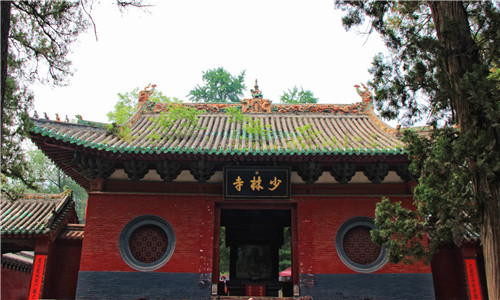
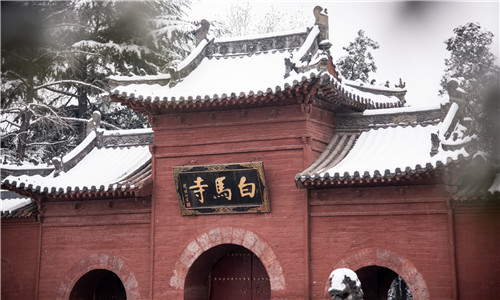
 Huangshan
Huangshan This morning, after breakfast, you will go to Huangshan by the estimated train: G1904 12:24/18:49. Your guide will wait for you and pick you up at the railway station and then take you to the hotel, so you can get ready for your trip the next day.
Huangshan has a long history, excellent ecology and abundant resources. It is filled with natural and healthy local products, street snacks with unique flavors, and there is Huangshan’s unique tea called Maofeng that you should not miss. And Huangshan Chrysanthemum is a famous specialty in Huangshan, well-known at home and abroad. Chrysanthemum in Huangshan is white in color, green in pedicel, small in the flower center, and praised as “the crown of chrysanthemum” by the Chinese Pharmacopoeia. It has both ornamental values and the medicinal function of nourishing the liver as well as detoxification. According to the legend in the Qing Dynasty, the disease of pinkeye spread in the capital of Beijing, the magistrate of Huangshan presented the local chrysanthemum and the eye disease was cured. As a result, the Huangshan Chrysanthemum had its fame, and was designated as imperial tribute. So it is also honored as “tribute chrysanthemum”.
After having breakfast, we will drive 56 KM northwest in about one hour to Huangshan Mountain. Huangshan Mountain is located in Huangshan City in southern Anhui Province, which is reputed as “the best mountain in the world”. It is famous for its five wonders, namely strangely-shaped pines, grotesque rocks, seas of clouds, hot springs, and winter snow. According to legend, the Yellow Emperor (chief of a tribal alliance in ancient China) once practiced alchemy in this place, so it is called Huangshan (In Chinese, Huangshan literally means yellow mountain).
We will first go to Yungu Temple, taking the Yungu cable car upward. Then we will come to Beginning-to-Believe Peak (Shixin Peak), which is 1,864 meters above sea level. It is a hot place or tourists to watch the sunrise. Then we will take you to the West Sea Grand Canyon. In this canyon of clouds, there are cliffs, pines, cypresses, and rocks, all appearing and disappearing in the white clouds. From near to far, beautiful scenery changes, which looks like the fairyland on earth, making one want to stay here.
Then we will come to Dispelling Cloud Pavilion (Paiyun Pavilion). It is one of the best places to watch the sunset. The pavilion, 1,520 meters above sea level, is along the classic hiking route of Huangshan Mountain scenic area. Then you will move on to the Flying-over Rock, which is located between the Bright Summit (the second highest peak) and the Paiyun Pavilion, and is one of the landmarks of Huangshan Mountain. The Flying-over Rock is 12 meters high and weighs 600 tons. It has a very small contact area with the rock at its bottom. It looks very shaky but it stands steady. In 1987, the TV series “the Dream of Red Mansions” was shot here.
Next we will go to the last stop of the day, Bright Summit. It is the second-highest peak of Huangshan Mountain. It is 1,860 meters above sea level. The peak is high and flat on top, with wide views and plenty of sunlight, hence the name “Bright Summit”. And because of its flat terrain, it is one of the best places for tourists to watch the sunrise and the sea of clouds. Then you will stay in one hotel in Huangshan Mountain Scenic Area.
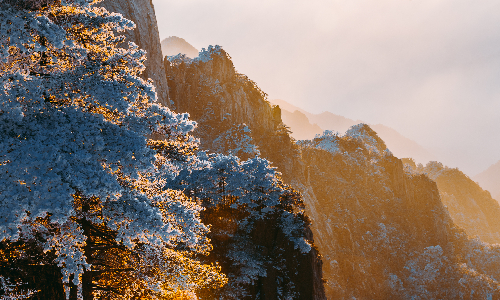
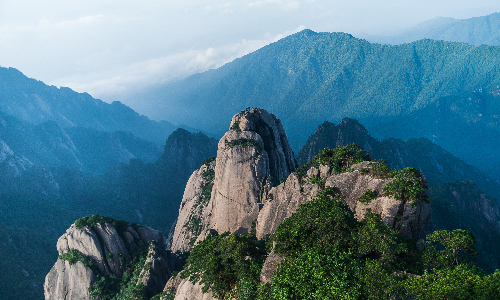
 Shanghai
Shanghai This morning we will see the beautiful sunrise at the Bright Summit, and then we will head for Lion Peak. Named after its shape, it resembles a lying lion. It is one of the few peaks that can be visited by tourists among the 72 peaks in the Huangshan Mountain Scenic Area. At Lion Peak, you can see Huangshan’s most famous stone—Stone Monkey Watching the Sea. Then we will walk to the cable car station and take one to go down. And lunch will be served.
Today is your last day in Huangshan, and then you will go to Shanghai. You will take the estimated train: G7310 15:59/18:49. Our guide will pick you up at the railway station and then take you to the hotel to have a good rest.
Today, after having breakfast, we will come to the famous Yu Garden (Closed on Mondays). Located in Huangpu District of Shanghai, Yu Garden was built in 1559 and has a history of more than 400 years. It is the only classical garden located in the bustling city center. It is not only the top of the existing five classical gardens in Shanghai but also one of the most famous classical gardens in Southern China style in the country. Yu Garden preserves a considerable number of ancient and famous trees, buildings of the Ming and Qing Dynasties, famous calligraphy and paintings, clay sculptures and brick carvings, as well as other cultural treasures, which embody the rich traditional Chinese culture and art. What’s more, as a name card of Shanghai’s traditional culture, the Yu Garden attracts a lot of leaders and celebrities from home and abroad. We are sure that you will enjoy your trip here.
Then you will go to Jade Buddha Temple. Although it is located in a bustling urban area, it enjoys quietness, known as a piece of pure land in the downtown area. The temple is most famous for the jade Buddha inside. The statue of the jade Buddha is carved from a whole piece of jade, and sits 1.95 meters high. The statue has a round face, crescent eyebrows, half-open eyes, and a serene expression. The Buddha’s cassock edge and right arm bracelet are all decorated with more than 100 pieces of jade, agate and other gems. The whole statue sends out glittering and translucent luster, presenting a serene, kind and loving manner.
After lunch, we will visit the Shanghai Tower. As the tallest building in Asia, with a height of 632 meters, the whole building is with 127 floors on the ground and 5 floors underground. It is a landmark in Shanghai, and it boasts the functions of business, entertainment, sightseeing and others. The world’s largest and tallest damper placed here is activated to keep the building stable. Cutting-edge technology has been used to create this eco-friendly building, in order to reduce energy consumption in offices and hotels by nearly half. Your guide will take you to the observation deck to have a panoramic view of Shanghai.
Next, we will come to the Bund, which is located on the bank of Huangpu River in Huangpu District of Shanghai. It is 1.5 kilometers long and there are a lot of things to be explored. Various architectural styles can be seen on the Bund, such as the British Classical style (Bund No. 2, Dongfeng Hotel), the British Renaissance style (Bund No. 3), the Gothic style (Bund No. 6, No. 13), and the Baroque style (Bund No. 1, China Pacific Insurance Company Headquarters, formerly known as Asia Building), showing the coexistence of buildings from all over the world. They are collectively known as the exotic building clusters on the Bund. As one of the landmarks of Shanghai, it is an important historical site in modern China nowadays.
The next place to visit is Nanjing Road. As you might have heard, Nanjing Road Pedestrian Street is the “First Commercial Street in China”, with an average daily passenger flow as high as 600,000. Since its opening in 1840, Nanjing Road has changed from a small road with about 100 years of history to a well-known commercial area that enjoys fame at home and abroad.
Next, we will take you back to your hotel to have a good rest so that you can refresh yourself and start your trip the next day energetically.
Option: We have prepared an optional activity this evening - to watch an acrobatics show-SPIRAL. is the show will start at 7:30, and lasts for 1.5 hours, till 9:00. “SPIRAL” is a performance carefully created by the Shanghai Acrobatic Troupe. It tells the stories of young people living in every corner of Shanghai.
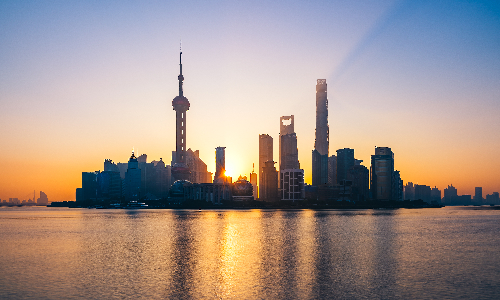
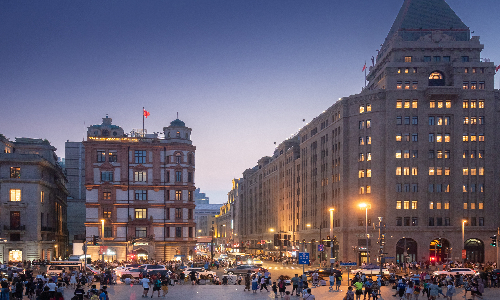
 Suzhou
Suzhou  Shanghai
Shanghai Today we will take you to Suzhou City after breakfast. Your driver will take you eastward for about 1.5 hours (the distance is about 100 kilometers). The first place you will visit in Suzhou is the Humble Administrator’s Garden. It was built in 1509. Covering a total area of 5.2 hectares, the garden today is roughly divided into west, middle and east sections. The Humble Administrator’s Garden is known for its water features, which account for one-fifth of the total garden area. The Azalea Festival and Lotus Festival are held each spring and summer respectively. In this peaceful place, you are sure to enjoy the beauty of nature and the architectures of the garden.
After lunch, you will go to the next place, Tiger Hill. Located in the northwest corner of the ancient city of Suzhou, it has a long history of more than 2,500 years. When you are visiting Suzhou, Tiger Hill is a must-go place. It is regarded as “the name card of the city of Suzhou” and the witness of the vicissitudes of Suzhou. An ancient Pagoda stands tall on the top of Tiger Hill, commonly known as “Tiger Hill Pagoda”, which was the symbol of ancient Suzhou. The ancient pagoda has a history of more than a thousand years, with seven stories and a height of 47.7 meters. It is tilted to the northeast, with the top 2.34 meters off-center. Therefore, it is also known as “China’s Leaning Tower of Pisa”.
The last stop in Suzhou is Shantang Street. It is said that it was built by Bai Juyi, a great poet of the Tang Dynasty, and now it has a history of more than eleven hundred years. As a famous free tourist attraction in Suzhou, it has been known as “the first street in Gusu (ancient name of Suzhou)”. Because of its unique geographical location in history, Shantang Street was one of the most developed area of trade and culture in the Ming and Qing Dynasties. You will be amazed by this fabulous street whenever you come. Then we will drive back to your hotel in Shanghai.
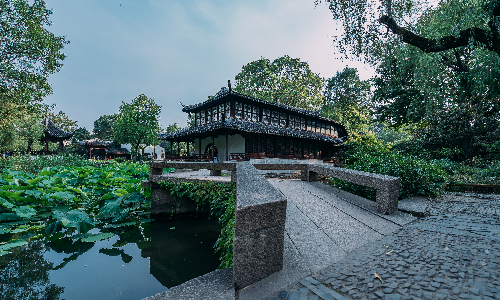
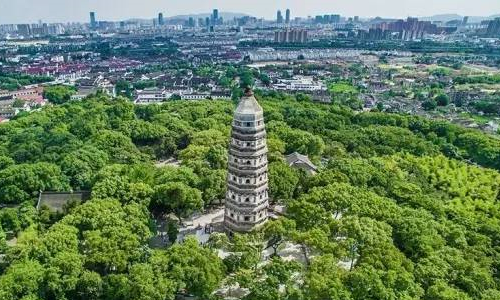
How time flies. Today is the last day of your wonderful China tour. Our guide and driver will pick you up at the hotel and transfer you to the airport according to your flight schedule. Thank you for choosing us. We sincerely hope you have harvested happiness on this trip, wish you a pleasant homebound journey and we are looking forward to meeting you one more time.
Author: Chen Jiao
Proofreader: Li Yiwen
| City | Five Star hotel list | Four Star hotel list |
|---|---|---|
| Beijing | Sunworld Dynasty Hotel Beijing Wangfujing | Sunworld Hotel Wangfujing |
| Xi'an | Tianyu Gloria Grand Hotel Xi'an | Sunworld Dynasty Hotel |
| Luoyang | Lee Royal Hotel Mudu | Xinyuan International Hotel |
| Huangshan | Huangshan International Hotel | Huangshan International Hotel |
| Shanghai | Ocean Hotel Shanghai | Courtyard by Marriott Shanghai Central |
 |
![]() About your child or infant, please contact us for a discounted price.
About your child or infant, please contact us for a discounted price.



We started with a few days in Beijing & ended in Shanghai, from where we visited the Forbidden City and Great Wall. In between we visited Terra Cotta Warriors Museum, Panda Base, Shanghai Disneyland.

We had a wonderful holiday in China which will remain long in the memory. China is a breathtakingly beautiful country full of splendid temples and palaces, mountains and rivers, peaceful rural scenes and bustling shopping streets.
 QUICK ENQUIRY
QUICK ENQUIRY